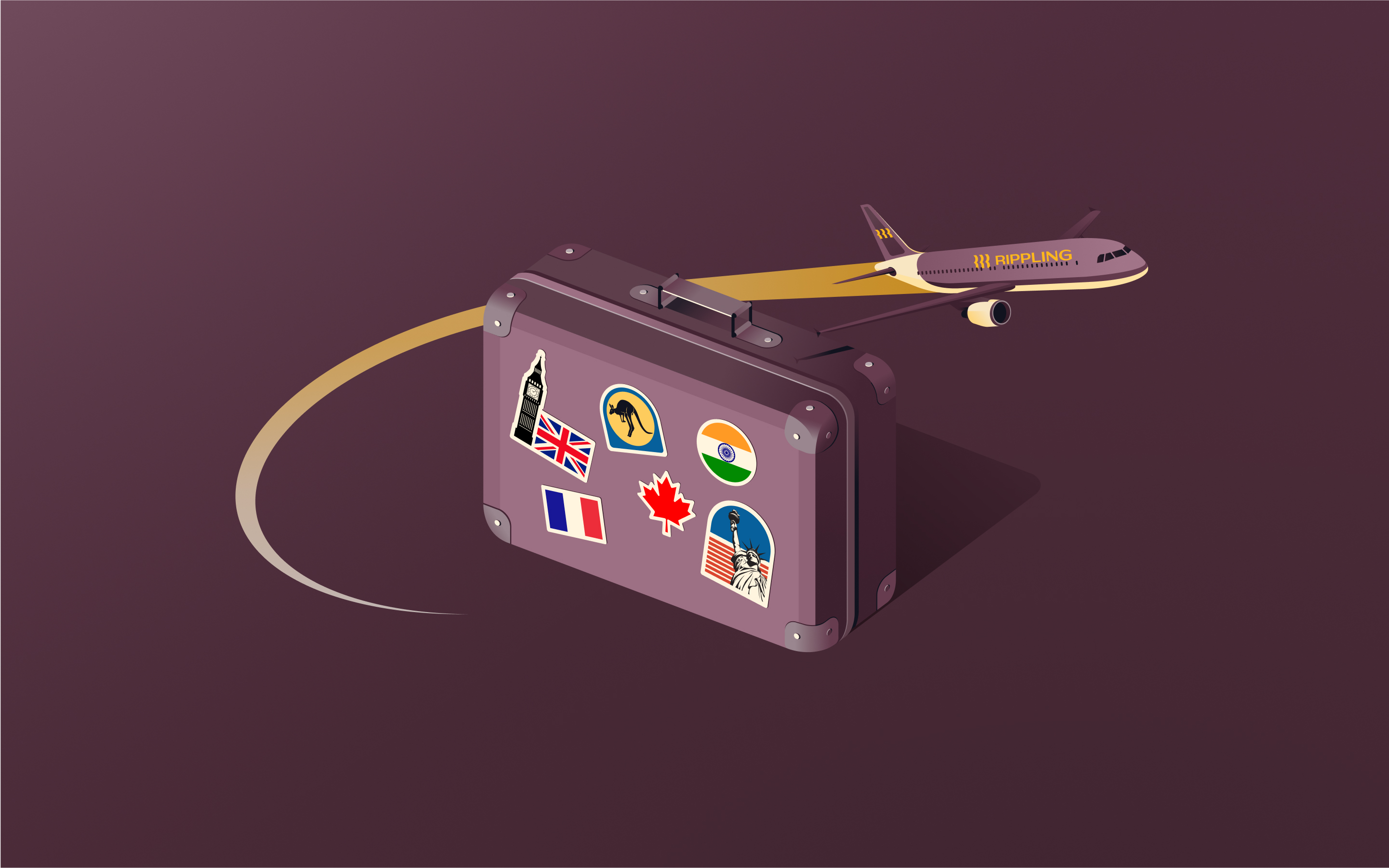7 steps for creating an effective travel and expense (T&E) policy for your business
A $200 client dinner missing both a receipt—and a client. A $50 “emergency expense” that turns out to be a hotel bathrobe. Unspecified “entertainment costs” charged in a city where your company has no offices. Without a clear travel and expense policy, expense reports can quickly start to resemble creative writing exercises. And while telling employees exactly how and where they can swipe those company cards might feel like micromanaging, it’s actually about ensuring that everyone stays on the same page about what’s fair, reasonable, and reimbursable.
In this article, we’ll unpack what goes into an effective travel and expense policy, from how to identify expense categories to the best tools to automate your expense reporting.
What is a T&E policy?
A travel and expense (T&E) policy is a set of specialized guidelines your company uses to help employees manage travel-related business expenses like airfare, meals, and lodging. It spells out what employees can spend on, how much they can spend, and how to request reimbursement. The goal is to control costs and keep everyone in the company aligned on the appropriate use of company funds.
Beyond operational and financial efficiency, a clear travel and expense policy can help your company avoid unwelcome surprises come tax season. By limiting employee purchases to tax-deductible expenses and requiring supporting documents, you ensure that you’re well-prepared in the case of an audit.
Benefits of a T&E policy
A solid T&E policy helps your business save money, stay compliant, and boost employee morale. When you set well-defined guidelines for spending and reimbursement, it simplifies expense management and reduces opportunities for error while ensuring that employees feel supported and fairly treated.
- Streamlined expense management. A clear T&E policy simplifies expense reporting by making it easier for your finance department to process receipts and invoices, ensuring speedy reimbursement.
- Improved compliance with regulations. Taking the time to craft a thorough, comprehensive expense policy helps keep you on the right side of IRS regulations and ensures accurate records in the case of an audit.
- Enhanced employee satisfaction. When employees know exactly which expenses your policy covers and when to expect reimbursement, they’re less likely to feel confused or frustrated.
- Reduced risk of fraud and mismanagement. By setting spending limits, requiring receipts, and establishing approval workflows, a T&E policy makes it easier to spot unusual spending patterns and unauthorized purchases.
7 essential components of a travel and expense policy
1. Expense categories and limitations
Define the types of spending covered by your policy and set spending limits within each category.
Example: Hotel stays are capped at $150 per night for domestic travel and $250 for international travel.
2. Reimbursement procedures
Outline the timelines and supporting documents required for expense reimbursement.
Example: Employees must submit expense reports by the 25th of each month.
3. Approval workflows
List the steps for pre-approval and final approval of expenses. Be sure to clarify if particular roles or departments follow specific procedures
Example: Purchases over $1,000 require approval from a manager and the finance department. Junior associates must request pre-approval from a vice president for all travel-related expenses.
4. Travel booking guidelines
Specify if business travelers must book flights and accommodations through a particular agency and identify preferred vendors.
Example: All hotel bookings must be made through the employee travel portal.
5. Per diem rates and meal allowances
Set daily per diem rates and incidental allowances based on employee level and geographic region.
Example: Sales representatives in Tier 3 cities are allotted $50 per day for meals and $20 for incidental expenses. Sales representatives in Tier 1 and 2 cities are allotted $65 per day for meals and $35 for incidental expenses.
6. Reporting requirements
Provide clear instructions about what to include in travel expense reports for accuracy. If necessary, consider creating a travel expense report template to illustrate the correct procedure.
Example: Reports must include an itemized list of all purchases, accompanied by a receipt. Include an explanation of the business purpose of your purchase.
7. Policy review and updates
Regularly revisit your travel and expense policy to stay current with changes in regulations and cost of living, as well as business needs.
Example: “As we have recently opened an office in Toronto, please refer to our new guidelines for international travel and preferred list of hotels.”
Defining the scope of your travel and expense policy
Eligible employees and roles
Identify the employees covered by your policy using clear, easy-to-apply criteria, such as job roles or project requirements. Adjust your approvals as necessary for efficiency; managers may only need sign-off from a director on an expense report, while more junior team members might require pre-approval before making a purchase.
Applicable travel scenarios (domestic vs. international)
Outline how your policy applies to domestic and international travel, including limits for airfare, mileage, accommodation, transportation, and meals. An online manual that incorporates interactive examples, quizzes, and other resources can help the business travelers on your team understand how to implement the policy correctly.
Budgetary constraints
Set realistic, flexible spending caps that can accommodate a variety of business travel scenarios. For example, caps on spending for incidentals and per diems typically reflect cost differences between regions. You’ll also want to lay down clear consequences for unauthorized spending.
Exclusions and exceptions
If you choose to carve out certain types of purchases, make that clear in your policy. Address how employees should handle emergencies while traveling and the support they can expect from the company. Employees may sometimes need to deviate from the policy, and it’s important that they understand proper procedure in advance to avoid unnecessary administrative hoops.
T&E tax implications
As long as they’re necessary for your business’s operations or growth, many common corporate travel expenses are tax deductible. Businesses can also reclaim value-added tax (VAT) on purchases made abroad, which can add up to significant savings for your travel expense budget if your employees regularly take international business trips to meet with clients, customers, or suppliers.
However, if you plan to claim these deductions, you’ll need to keep accurate records. Each claimed expense requires a supporting document, like an invoice, a receipt, or a billing statement. To reclaim VAT, you’ll need to follow country-specific regulations.
Best practices to streamline your travel and expense management
The tools and processes you use to manage expenses as a small company or solo entrepreneur may or may not scale with your business as it grows. More employees hopping on planes and booking client dinners means more receipts to track, reimbursements to process, and IRS rules to monitor.
Streamlined expense management systems and clear guardrails around company spending can help you maintain control over larger teams and accuracy in your books and records.
1. Use automated expense management tools
Automated tools simplify expense reporting by categorizing business expenses and capturing receipts in real time. A sales rep on the road can use a mobile app to scan a hotel bill after checkout, for example, eliminating the need to keep track of documents and manually enter data. Many expense management tools integrate with accounting and financial reporting systems, which can help streamline the reimbursement process.
2. Implement clear guidelines for employees
Establishing straightforward rules around company spend minimizes opportunities for confusion when it comes time for employees to make purchase decisions. Remember, an effective spending policy covers more than just expense categories and limits, it also ensures that employees understand exactly what’s needed to receive timely reimbursements.
3. Regularly review and update policies
A T&E policy needs to stay relevant to remain effective. For example, the IRS updates rates for mileage reimbursement annually to reflect changes in the cost of owning or operating a vehicle. Ideally, you’ll revise your company travel policy each year to keep pace. Cost of living changes can also make business travel more expensive over time, something else your company guidelines should take into account.
4. Train employees on policy adherence
Comprehensive training gives employees the tools to manage business and travel expenses without constantly referring to managers or the finance team. For example, offering new joiners a short session on spending limits and corporate cards can prevent inadvertent misuse. Ongoing communication about best practices also helps reinforce compliance.
5. Set up real-time tracking for expenses
Real-time tracking tools give your finance department and decision-makers high-level visibility into spending trends across the company. For example, expense management software can flag out-of-policy purchases immediately, allowing for quick intervention.
7 steps to writing a clear travel & expense policy for your business
Creating your T&E policy is like drawing a financial roadmap for your business travelers, helping them to make sound financial decisions quickly and without consulting your finance team. An employee booking last-minute travel to attend a meeting shouldn’t need to go through hundreds of paragraphs before making a critical reservation. A clear, concise travel and expense policy empowers them to move forward without unnecessary delays or worrying about reimbursement.
Step 1. Identify your business travel and expense needs
Consider the types of business expenses your company usually incurs, like transportation, lodging, or meals. Be sure to take into account the needs of both your frequent business travelers and those who may take only a few trips per year. Understanding the needs of your entire workforce helps define appropriate expense categories and ensure that your policy aligns with operational priorities.
Step 2. Establish clear goals and objectives
Think about what your company most wants to achieve with its T&E policy. Are you focused on cutting costs? Streamlining workflows for the finance department? Improving overall financial compliance? Having clear objectives can help you make smart decisions around spending limits, pre-approvals, and documentation requirements.
Step 3. Define approval workflows
Create a structured process to approve expenses that balances accountability and efficiency. Too many approvals can damage employee morale and create administrative bottlenecks, while too few may lead to out-of-policy spending. Establish clear rules for when pre-approval is required, such as for large expenditures or international purchases.
Step 4. Set spending limits and categories
Use expense categories to set clear spending limits for particular types of purchases, such as meal allowances, mileage reimbursement rates, or hotel rates. Be sure to take into account market trends and geographic differences to keep policies fair and practical. A $200 limit on hotel lodging usually goes a lot further in Portland, Maine than it does in Portland, Oregon, for instance.
Step 5. Outline reimbursement processes
Specify how employees should submit their receipts and invoices, either digitally or via hard copy, and set clear timelines for processing claims. Include details on acceptable formats, such as file types, to avoid unnecessary administrative holdups. Setting clear expectations for reimbursement helps employees stay on top of key documents and reduces the risk of accounting errors that can arise from late or incomplete expense reports.
Step 6. Develop a process for policy communication
Leverage training sessions, email reminders, digital platforms, and other tools to ensure that your employees have access to your T&E policy and understand how to apply it in the wild. Clear communication channels also come in handy when you need to keep employees in the loop about proposed changes.
Step 7. Review and iterate based on feedback
Regularly collect feedback about your T&E policy from frequent business travelers and your finance department to understand how effectively it balances employee needs and the company’s financial priorities. Depending on what you hear, you may choose to loosen the purse strings in some areas or tighten them in others.
Simplify your business finances with Rippling
With Rippling, expense management, and reimbursements become fast, painless, and user–friendly experiences thanks to powerful customization and automation.
Employees can submit expenses or upload receipts with automatic receipt capture via mobile or web. Approvals are automated using the rules you create based on employees’ departments, roles, job titles, locations, and other data—and once you set them up, they automatically apply to reimbursement requests. Out-of-policy transactions are stopped in real time, and requests, duplicate transactions, or receipt mismatches get automatically flagged. Every expense gets synced to your organization’s general ledger for easy accounting—no matter where your employees are in the world.
With Rippling you can:
- Automatically route expenses and bills to the right approver every time.
- Flag out-of-policy spending with hyper-custom policies, like by vendor or value, for further review.
- Close the books faster with AI-powered transaction categorization, and integration with your accounting systems.
T&E policies FAQs
How can small businesses implement a T&E policy without extensive resources?
Small businesses can implement a T&E policy by delineating basic expense categories, setting spending limits, and leveraging low-cost tools like spreadsheets or free apps for expense reporting to monitor employee spend. Straightforward workflows and clear approval chains can simplify compliance and control.
What are the consequences of non-compliance with a T&E policy?
Consequences of non-compliance with a T&E policy vary from company to company. Employees who habitually break the rules may find themselves navigating stricter approval processes and waiting longer to receive reimbursements. For companies, non-compliance can lead to broken budgets, inaccurate reimbursements, and legal risks in the case of an IRS audit.
How do T&E policies differ for domestic vs. international travel?
T&E policies for domestic and international travel typically differ in terms of rigor. International travel usually requires additional documentation, such as itemized receipts, as well as proof that employees abided by currency conversion guidelines. Companies may also need to collect documentation to demonstrate compliance with foreign tax regulations.
Can a T&E policy include remote or hybrid work expense guidelines?
Yes, modern T&E policies often take into account expenses associated with remote work, such as internet or co-working costs, to ensure that employees outside of the office don’t shoulder business costs out of their own pockets. These guidelines can complement traditional business travel policies or exist as stand-alone guidelines.
Control your spend anywhere and everywhere
This blog is based on information available to Rippling as of February 5, 2025.
Disclaimer: Rippling and its affiliates do not provide tax, accounting, or legal advice. This material has been prepared for informational purposes only, and is not intended to provide or be relied on for tax, accounting, or legal advice. You should consult your own tax, accounting, and legal advisors before engaging in any related activities or transactions.











